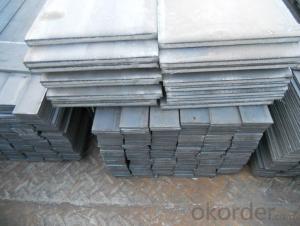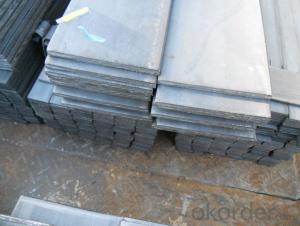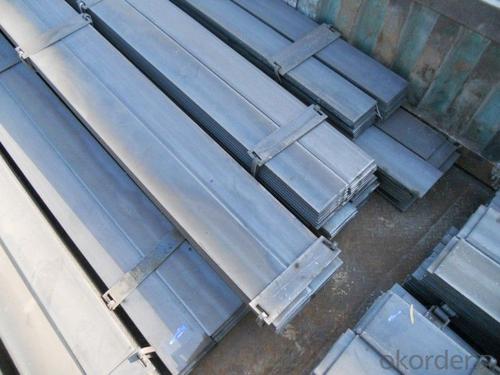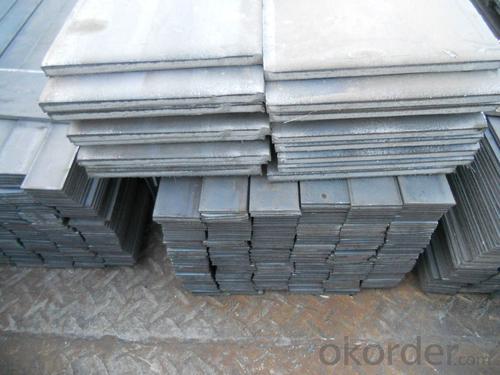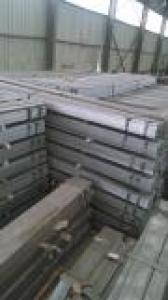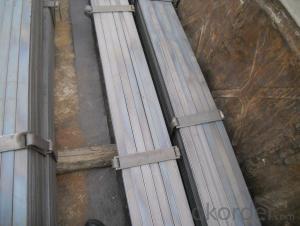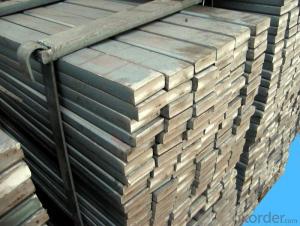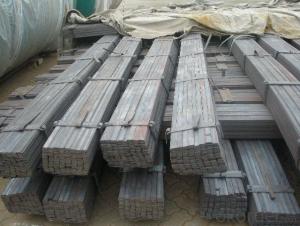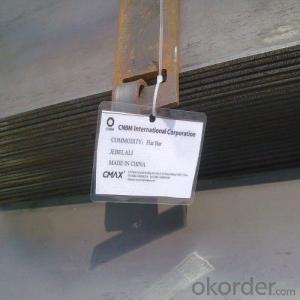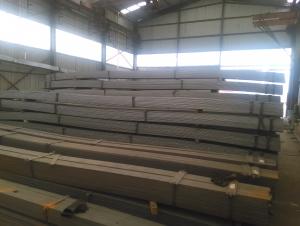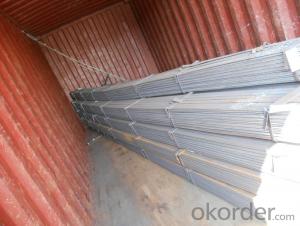Seel Flat Bars with Material Grade Q235/SS400
- Loading Port:
- Tianjin
- Payment Terms:
- TT OR LC
- Min Order Qty:
- 25 m.t.
- Supply Capability:
- 10000 m.t./month
OKorder Service Pledge
OKorder Financial Service
You Might Also Like
Product Description:
OKorder is offering high quality Flat Bar at great prices with worldwide shipping. Our supplier is a world-class manufacturer of steel, with our products utilized the world over. OKorder annually supplies products to European, North American and Asian markets. We provide quotations within 24 hours of receiving an inquiry and guarantee competitive prices.
Product Applications:
Flat Bars are ideal for structural applications and are widely used in the construction of buildings and bridges, and the manufacturing, petrochemical, and transportation industries.
Product Advantages:
OKorder's Flats Barare durable, strong, and resist corrosion.
Main Product Features:
· Premium quality
· Prompt delivery & seaworthy packing (30 days after receiving deposit)
· Corrosion resistance
· Can be recycled and reused
· Mill test certification
· Professional Service
· Competitive pricing
Product Specifications:
Manufacture: Hot Rolled
Grade: Q195 – 235 ;SS400
Certificates: ISO, SGS, BV, CIQ
Length: 6m – 12m, as per customer request
Packaging: Export packing, nude packing, bundled
Chemical composition of Q235
Alloy No | Grade | Element(%) | ||||
C
| Mn
| S
| P
| Si
| ||
Q235
|
B
|
0.12—0.20 |
0.3—0.7 |
≤0.045 |
≤0.045
|
≤0.3
|
Physical properties of Q235
Alloy No | Grade | Yielding strength point(Mpa) | Tensile strength (Mpa) | Elongation after fracture(%) | ||||||
Thickness (mm) | Thickness (mm) | |||||||||
≤16 | >16--40 | >40--60 | >60--100 | ≤16 | >16--40 | >40--60 | >60--100 | |||
≥ | ≥ | |||||||||
Q235 |
B |
235 |
225 |
215 |
205 |
375--500 |
26 |
25 |
24 |
23 |
FAQ:
Q1: How soon can we receive the product after purchase?
A1: Within three days of placing an order, we will begin production. The specific shipping date is dependent upon international and government factors, but is typically 7 to 10 workdays.
Q2: How do we guarantee the quality of our products?
A2: We have established an advanced quality management system which conducts strict quality tests at every step, from raw materials to the final product.
Q3: The products are invoicing on theoritical weight or on actual weight basis ?
A3: We can do it in both manners, according to buyers' requirement.
Q4: What is the normal tolerance of your steel products ?
A4: Normally 7%-9%, but we can also produce the goods according to the customers' requests.
Images:
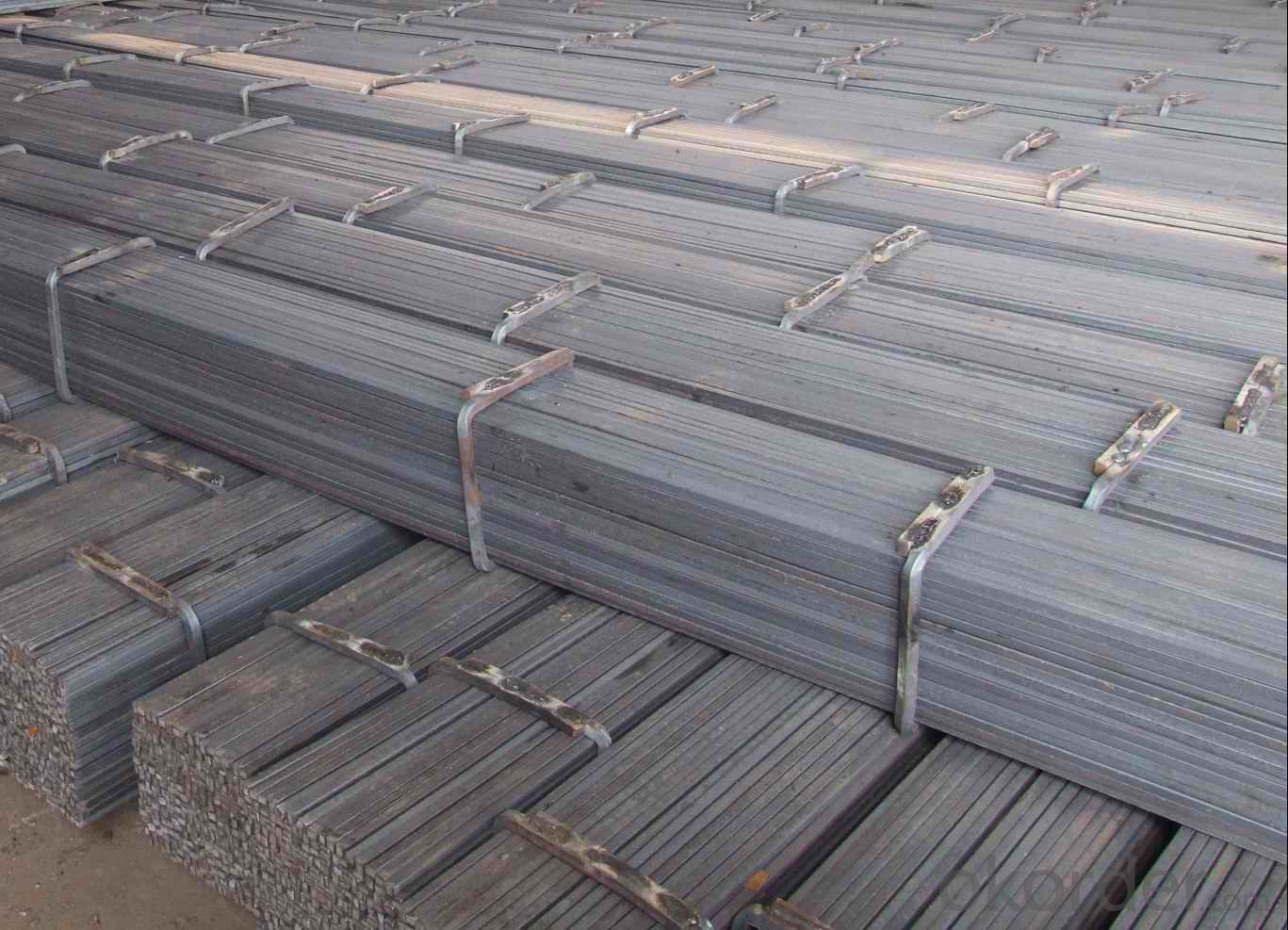
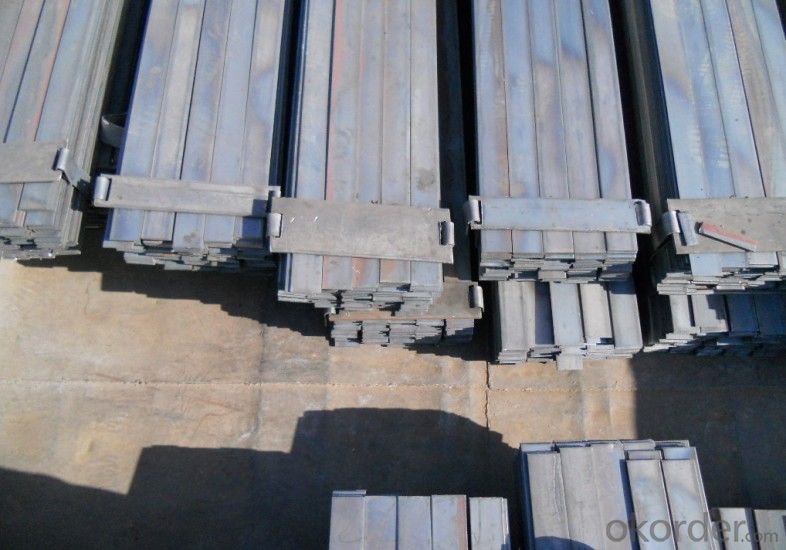
- Q: Can steel flat bars be coated with anti-slip materials?
- Yes, steel flat bars can be coated with anti-slip materials. There are various methods and materials available for coating steel flat bars to provide an anti-slip surface. One commonly used material is a non-slip epoxy coating that contains aggregates such as aluminum oxide or silicon carbide. These aggregates create a rough surface that enhances grip and prevents slips or falls. Additionally, other materials like rubber, vinyl, or adhesive tapes with anti-slip properties can also be applied to steel flat bars to increase their slip resistance. These coatings can be beneficial in areas where slip hazards are present, such as walkways, ramps, stairs, or industrial settings. Properly coating steel flat bars with anti-slip materials improves safety and reduces the risk of accidents in various environments.
- Q: Are steel flat bars corrosion-resistant?
- Yes, steel flat bars can be corrosion-resistant depending on the type of steel used and the presence of protective coatings or treatments. Stainless steel flat bars, for example, contain chromium which forms a passive oxide layer on the surface, providing corrosion resistance. However, carbon steel flat bars are more prone to corrosion and require additional measures to protect against rust.
- Q: Can steel flat bars be drilled or tapped easily?
- Drilling or tapping steel flat bars is a breeze. Steel is a versatile material that can be machined using a variety of tools and techniques. To drill holes in steel flat bars, you can use either a drill press or a handheld drill with the appropriate drill bit. Likewise, creating threads in steel flat bars is achievable with a tap and die set. However, the ease of drilling or tapping may vary depending on the thickness and hardness of the steel. Thicker and harder steel bars may require more power and specialized tools for drilling or tapping. Moreover, employing cutting fluids or lubricants can enhance the ease and efficiency of the drilling or tapping process.
- Q: Can steel flat bars be used for manufacturing handrails or balustrades?
- Yes, steel flat bars can be used for manufacturing handrails or balustrades. They are commonly used due to their strength, durability, and versatility in design.
- Q: Can steel flat bars be used for making brackets or supports for telecommunications equipment?
- Yes, steel flat bars can be used for making brackets or supports for telecommunications equipment. Steel is a strong and durable material that can provide the necessary structural support for telecommunications equipment. Flat bars are particularly suited for this purpose as they can be easily fabricated and shaped into the desired bracket or support design. Moreover, steel flat bars have excellent load-bearing capabilities, making them suitable for holding the weight and ensuring stability of the equipment. Additionally, steel is resistant to environmental factors such as corrosion and can withstand harsh conditions, making it a reliable choice for telecommunications equipment brackets or supports.
- Q: How do you determine the hardness of a steel flat bar?
- The hardness of a steel flat bar can be determined using various methods, such as the Rockwell hardness test, Brinell hardness test, or Vickers hardness test. These tests involve applying a specific amount of force to the surface of the steel and measuring the depth or size of the resulting indentation. The hardness value obtained from these tests provides an indication of the steel's resistance to indentation and can be used to evaluate its strength and durability.
- Q: Are steel flat bars suitable for high-temperature environments?
- When it comes to high-temperature environments, steel flat bars are generally a good choice. However, the type of steel and its maximum temperature tolerance will vary depending on the specific use. For instance, stainless steel flat bars are particularly known for their excellent resistance to heat and can withstand temperatures as high as 1500°F (816°C). They also have good mechanical properties, which means they can maintain their strength and shape even when exposed to high temperatures. Nevertheless, it is important to consider the unique requirements of each high-temperature environment. Factors such as the duration of exposure to high temperatures, the presence of corrosive substances, and the potential for thermal expansion or contraction must be taken into account. In some extreme situations, such as in furnaces, specialized high-temperature alloys or refractory metals may be more suitable. To ensure the best performance in a specific high-temperature application, it is always recommended to seek the advice of a materials engineer or specialist. They can assess the specific requirements and offer guidance on the most appropriate steel grade, heat treatment, and any additional protective measures that may be necessary.
- Q: Do steel flat bars have a specific electrical conductivity?
- Steel flat bars do not possess a specific electrical conductivity. The conductivity of steel varies depending on its type and composition. In general, steel is regarded as a subpar conductor in comparison to copper or aluminum, albeit it still conducts electricity to some degree. The conductivity of steel can be affected by factors like impurities, alloying elements, and the heat treatment procedure. Consequently, it is advisable to consult the distinct properties and specifications of the steel flat bar to ascertain its electrical conductivity.
- Q: What are the common surface treatments for steel flat bars?
- Steel flat bars can undergo various surface treatments to improve their appearance, durability, and resistance to corrosion. The most common treatments are as follows: 1. Hot-dip galvanizing immerses the bars in molten zinc, creating a protective coating that enhances their lifespan and corrosion resistance. 2. Powder coating involves applying a dry powder to the bars and heating it to create a long-lasting finish. This treatment offers a wide range of colors and excellent resistance to scratching, chipping, and fading. 3. Electroplating deposits a thin layer of metal, such as zinc, nickel, or chrome, onto the bars using electricity. It improves their appearance, corrosion resistance, and can provide a decorative finish. 4. Painting applies a layer of paint to the bars for both aesthetic appeal and protection against corrosion. Different types of paints, such as epoxy, polyurethane, and enamel, can be used depending on specific requirements. 5. Anodizing, mainly used for aluminum but can also be applied to steel flat bars, involves creating an oxide layer through electrolysis. This enhances corrosion resistance and provides a decorative finish. These surface treatments are widely used in industries like construction, automotive, manufacturing, and infrastructure projects. The choice of treatment depends on specific application requirements, such as desired aesthetics, durability, and corrosion resistance.
- Q: Are steel flat bars used in the manufacturing of automotive components?
- Indeed, steel flat bars find widespread usage in the production of automotive components. These components necessitate exceptional strength and endurance, properties that steel inherently possesses. Frequently employed in the creation of diverse automotive parts like brackets, frames, hinges, and supports, steel flat bars offer stability and structural integrity to these elements, consequently guaranteeing their dependable performance across various operating conditions. Furthermore, steel flat bars prove highly convenient for the intricate designs and customization prerequisites of automotive manufacturing, as they can be effortlessly machined and welded.
Send your message to us
Seel Flat Bars with Material Grade Q235/SS400
- Loading Port:
- Tianjin
- Payment Terms:
- TT OR LC
- Min Order Qty:
- 25 m.t.
- Supply Capability:
- 10000 m.t./month
OKorder Service Pledge
OKorder Financial Service
Similar products
Hot products
Hot Searches
Related keywords

